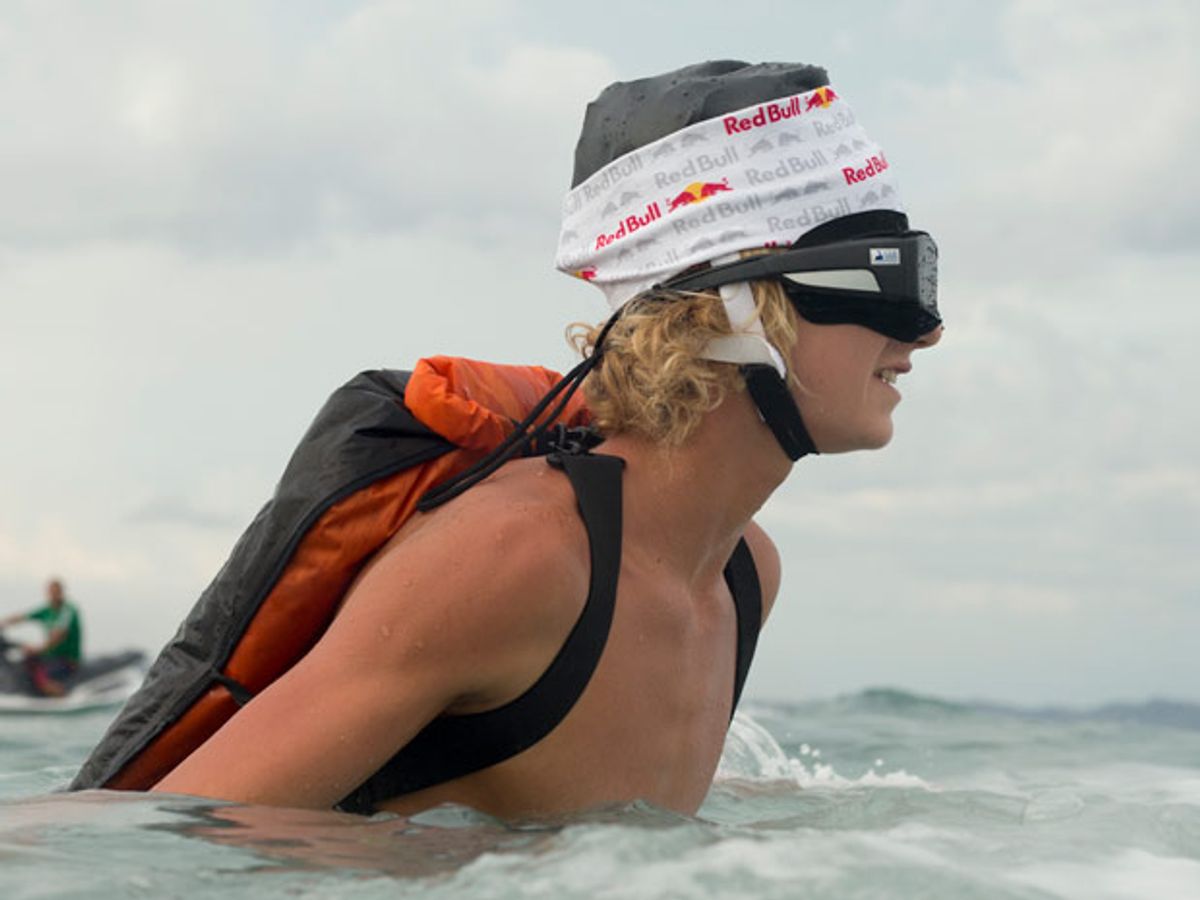When the energy drink company Red Bull flew a team of neuroscientists and elite surfers to a beach town in Mexico in late August, it was in hopes of answering a vexing question: How can you study the brain waves of surfers while they’re actually riding the waves?
Some people might consider another question more pressing: Why would you want to? But Red Bull already had an answer for that one. The company wanted to know “what stoke looks like in the brain,” says Brandon Larson, a technologist on Red Bull’s R&D team. (You read that correctly. It’s stoke not stroke.) When a surfer is stoked, Larson says, that person is “in the zone,” and performing at peak potential. If scientists can find the biomarkers of stoke, maybe coaches can use the information to help surfers achieve that hallowed state of mind.
It may come as a surprise that Red Bull’s R&D team isn’t devoted simply to the study of caffeine, and how to pack more molecules of it into those slim silver cans. In fact, Red Bull’s high performance unit has a number of biomedical research projects underway, and they’re “all about seeing what makes althetes tick,” says David Putrino, one of the neuroscientists who went to Red Bull’s surf camp in Salina Cruz, Mexico. At the camp, technologists were testing out a number of high-tech gadgets, including environmental sensors for surfboards, biometric sensors for surfers, and waterproof communication systems. But the brain experiments were surely the most extreme science.
During his week on the beach, Putrino and his neuroscience colleagues devised a water-resistant EEG system that surfers could wear into the ocean to record their brain activity. With EEG, electrodes on the scalp record the aggregate electrical activity of the brain; the various patterns of pulses (i.e. the different brain waves) have been associated with different mental states.
Typically, though, researchers deploy EEG systems in a lab. Red Bull’s Larson says that using an EEG system at surf camp sounded nearly impossible: “The ocean is terrible for electronics, there’s sand everywhere,” he says. But the Red Bull team figured if they could pull it off there, they could do it anywhere. “We can then roll this out to other sports,” Larson says.
The 15-year-old surfing phenom Jake Marshall was the scientists’ willing guinea pig. The researchers rigged up a system using Wearable Sensing’s dry electrodes (typical EEG requires smearing gel on the scalp), along with electronic components that were wrapped in silicone and velcroed to Marshall’s head. They pulled a swim cap over that gear and wrapped a waterproof bandanna around the cap. To keep sweat from interfering with the electric signal, they slipped some dessicants and tiny ice packs under the swim cap. Marshall also wore a waterproof backpack containing a laptop, which received the brain wave data from the headset. “Then he went out for a surf,” says Putrino. “He was completely unfazed.”
The researchers got 17 minutes of clean EEG recording while Marshall paddled out, checked out the waves and indicated which ones were worth catching, and then rode a big one back to the beach. The scientists are still crunching the data from those 17 minutes, and Putrino says this was primarily a proof-of-concept study. He hopes to get interesting enough results to justify another round of brain-surfing, perhaps with more sophisticated equipment.
However, Putrino is happy to share his first “totally unscientific” impressions of the surfers’ brains. The researchers also recorded the brain waves of Marshall and another surfer while they sat quietly on the beach in order to get baseline EEG recordings. Putrino says he was amazed by the power of the surfers’ alpha waves, the frequency associated with relaxation and meditation. “We’d say, close your eyes and focus on your breathing, and immediately we’d see this overwhelming alpha power,” says Putrino. “It’s not often you see that so strongly.”
Putrino notes that he tried surfing himself during that week in Mexico, and didn’t have much success at first. There was too much stimulation from the water and the wind, he says, and he was thrashing around, trying to take it all in. “But the moment I calmed myself down and stopped thrashing around, I got better,” he says. That experience led to his current hypothesis: Maybe elite surfers are so good because they can summon up a meditative brain state at will. Red Bull’s surf camp may yield this first piece of advice for up and comers: If you want to rule the waves at Mavericks one day, you’d better learn how to chill.
Eliza Strickland is a senior editor at IEEE Spectrum, where she covers AI, biomedical engineering, and other topics. She holds a master’s degree in journalism from Columbia University.




